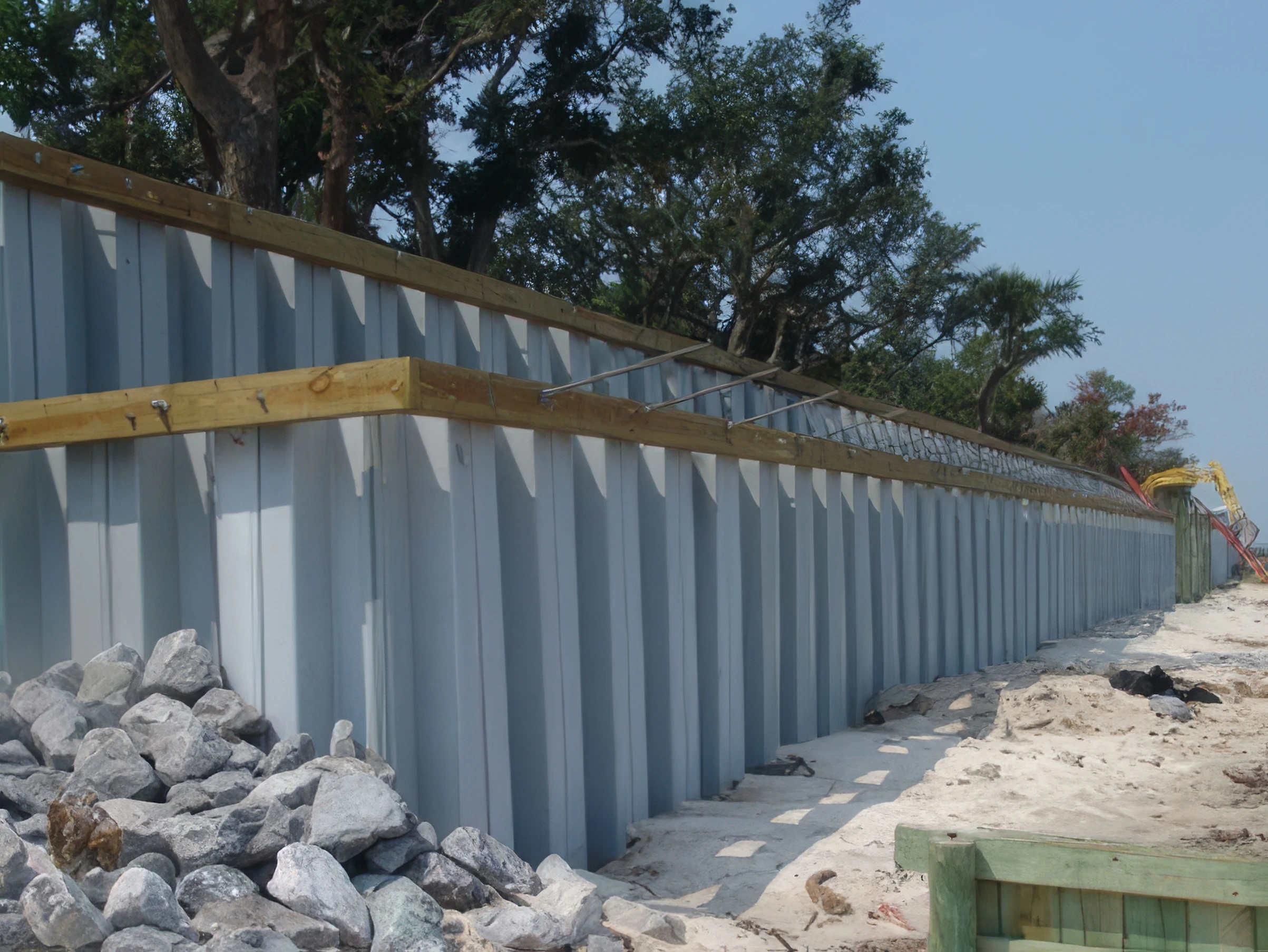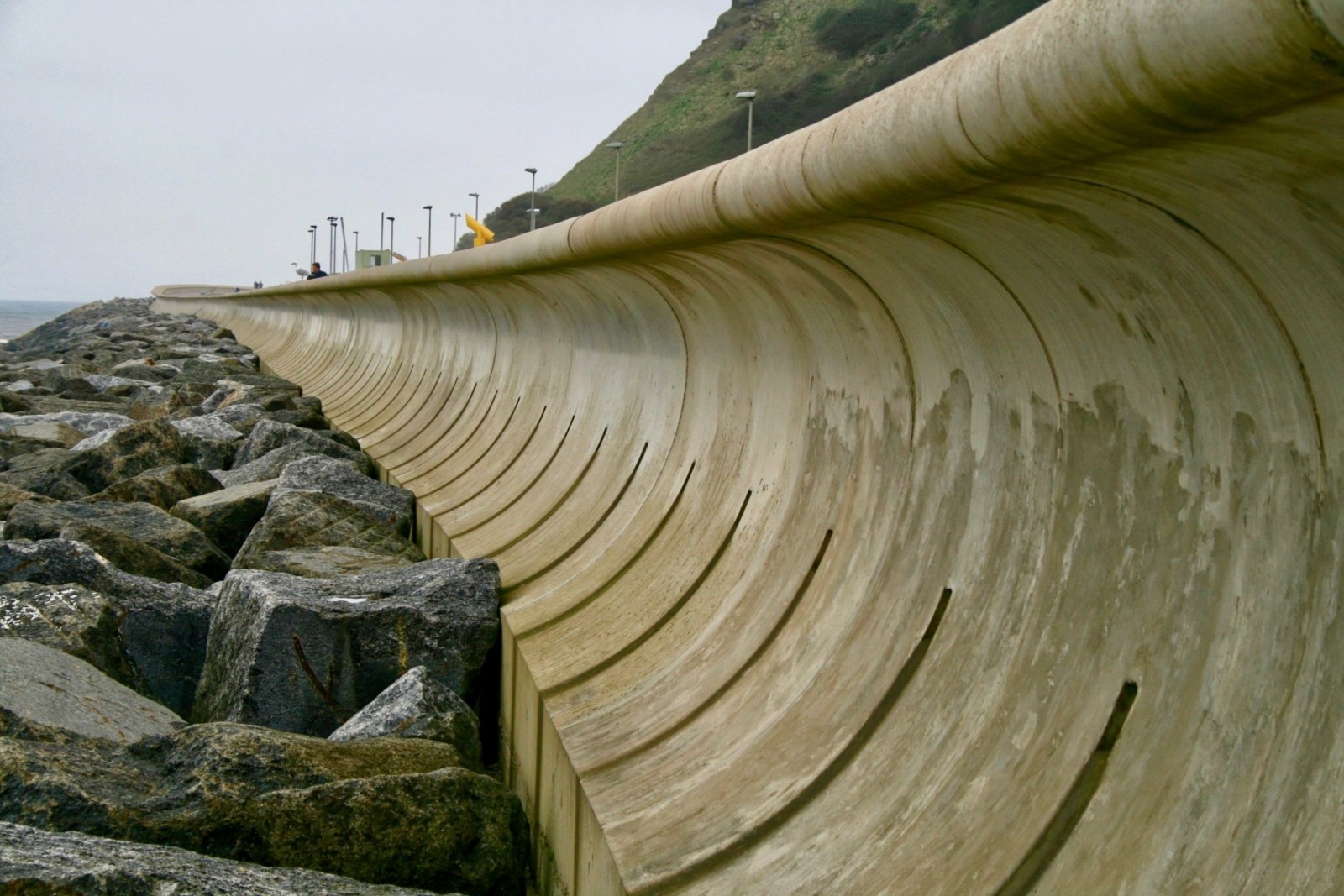Vinyl - Inexpensive, resistant to corrosion, requires little maintenance. It often includes concave indentions to help divert the water's energy.
Steel - Corrodes easily, stronger than vinyl, expensive.
Concrete - Extremely strong, expensive, resistant to erosion. Can crack and erode over time.
Wood - Used for more freshwater applications, can be inexpensive but rots over time.
Rip rap - made of rocks placed in front of or along a seawall to protect the shoreline. Can be locally sourced, creates a living seawall and is inexpensive.
Creating a hybrid combination is advised, incorporating elements of different designs to adapt to various coastal conditions. Curved seawalls and rocks placed in front can help divert the waves' energy before it strikes the walls. Adequate drainage is needed to allow water to not be trapped behind the wall.
Creating netting or other filtration on the interior side of the wall can help reduce the amount of sand that will be lost. This can also help decorative pavers or decking to stay intact from sediment loss underneath.
While seawalls can help protect property from erosion, it can lead to further beach erosion. It is advised to use in combination with berms to help rebuild your beach.
Take Action!
2024 Copyright SaveOurCoastline.org. All rights reserved.


